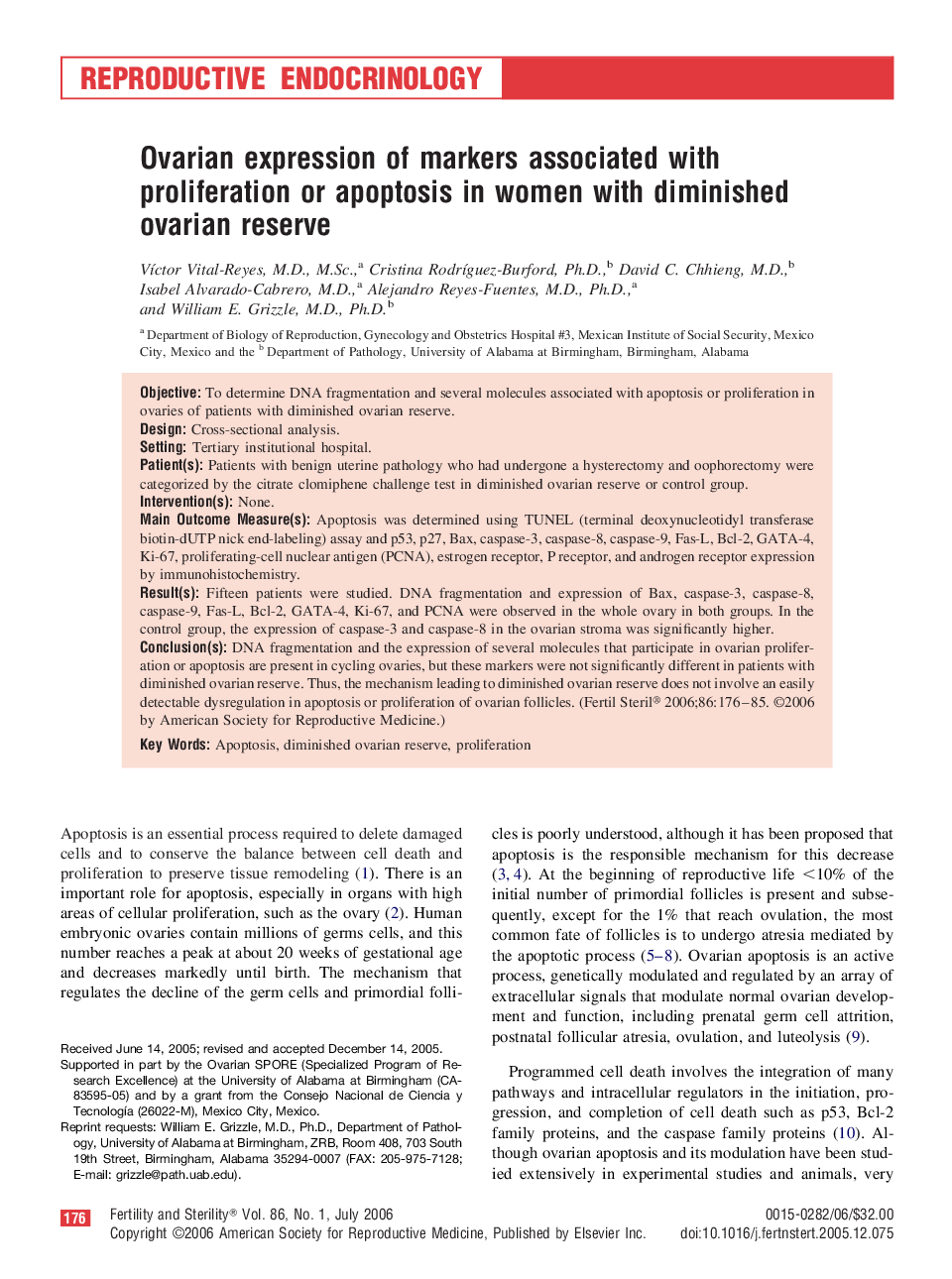| Article ID | Journal | Published Year | Pages | File Type |
|---|---|---|---|---|
| 3941389 | Fertility and Sterility | 2006 | 10 Pages |
ObjectiveTo determine DNA fragmentation and several molecules associated with apoptosis or proliferation in ovaries of patients with diminished ovarian reserve.DesignCross-sectional analysis.SettingTertiary institutional hospital.Patient(s)Patients with benign uterine pathology who had undergone a hysterectomy and oophorectomy were categorized by the citrate clomiphene challenge test in diminished ovarian reserve or control group.Intervention(s)None.Main Outcome Measure(s)Apoptosis was determined using TUNEL (terminal deoxynucleotidyl transferase biotin-dUTP nick end-labeling) assay and p53, p27, Bax, caspase-3, caspase-8, caspase-9, Fas-L, Bcl-2, GATA-4, Ki-67, proliferating-cell nuclear antigen (PCNA), estrogen receptor, P receptor, and androgen receptor expression by immunohistochemistry.Result(s)Fifteen patients were studied. DNA fragmentation and expression of Bax, caspase-3, caspase-8, caspase-9, Fas-L, Bcl-2, GATA-4, Ki-67, and PCNA were observed in the whole ovary in both groups. In the control group, the expression of caspase-3 and caspase-8 in the ovarian stroma was significantly higher.Conclusion(s)DNA fragmentation and the expression of several molecules that participate in ovarian proliferation or apoptosis are present in cycling ovaries, but these markers were not significantly different in patients with diminished ovarian reserve. Thus, the mechanism leading to diminished ovarian reserve does not involve an easily detectable dysregulation in apoptosis or proliferation of ovarian follicles.
